In Chile, the micro-development organisation MAPLE has been working for almost a decade with Mapuche communities to create a sustainable and community-powered finance tool that fits the tradition values and culture of the Indigenous population The key to their methodology is to honour nature-based solutions to environmental work and use a ‘slow development’ process.
As Alliance magazine’s June 2021 issue looks at climate philanthropy ahead of COP26 in Glasgow, we partnered with the International Philanthropy Commitment on Climate Change to ask a number of organisations around the world: what is philanthropy’s role in addressing climate change at this critical moment?
Alison Guzman, co-director of MAPLE’s Araucania region programme, and Ignacio Krell, a Chilean sociologist who has worked with MAPLE to develop culturally-appropriate environmental and agroecology projects, joined Alliance and the International Philanthropy Commitment on Climate Change to talk about Indigenous-led climate work in South America.
Alliance and IPCCC: Has your organisation made any commitment to climate action or joined a climate pledge? If so, what?
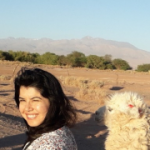
Alison Guzman
Alison Guzman and Ignacio Krell: MAPLE Microdevelopment Chile is located in the Global South, where our programme branch in Chile of our international non-profit, collaborates with Indigenous Mapuche-Lafkenche partners of Lake Budi, a megadiverse coastal wetland and biocultural hotspot of Northern Patagonia. In 2013, they invited us to accompany them in the participatory design of community self-management tools for a regenerative economy based on Mapuche values and assets. Since then, we have made the Mapuche ancestral territory our home and are committed to working with our Indigenous partners to co-design tools that restore and revitalise Mapuche-Lafkenche environmental and cultural patrimony for future generations, and that includes developing community-led mechanisms that in turn cope with climate change.
What encouraged your organisation to start its climate journey?
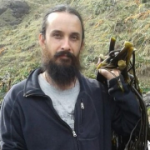
Ignacio Krell
Through years of deep learning as an action research collective, we have come to recognise that nature-based solutions could save Lake Budi and its mega diverse wetlands, and thereby preserve the biocultural heritage of the next generations of Mapuche-Lafkenche, are also emerging from the communities themselves as they regain control of their regenerative economies. These regenerative community economies, built by the communities themselves to restore their territories, heritage, livelihoods and, ultimately, their good living, are now more urgent than ever. Responses structured organically from the bottom up are slow to take shape during the incubation period, but once tested, monitored and appropriated by local communities, these ‘slow brewed’ solutions can provide effective answers in times of environmental and social crisis.
In fact, in various regions of the world, despite the challenges posed by the growing fragmentation of both knowledge and institutional structures, as well as biocultural landscapes and their ecosystems, Indigenous peoples and their allies are using global tools (institutional, technological, communicational) to reaffirm their own deeply relational worlds or territories of life. With this reaffirmation comes the possibility of ‘buen vivir’ (good living) with economic, environmental, cultural, and spiritual dimensions in healthy balance.
Can you share an example of the changes that your organisation has made in its embrace of climate work?
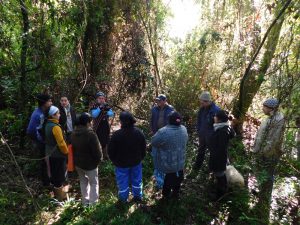 In early 2020 we co-designed with the communities their first Mapuche Indigenous-led environmental non-profit association. Budi Anumka gathers a diverse group of like-minded Mapuche professionals, thinkers, and activists, residing in the southern territories of Lake Budi whose mission is: Through education, research and dialogue of knowledge with the Kuifike Kimün (ancestral knowledge) of our authorities and territorial custodians, we make visible and project Mapuche initiatives for the reconstruction and defense of biodiversity and the biocultural heritage of the ancestral territory Ayllarewe Budi, exercising Mapuche self-governance through the Azmapu (Mapuche Normative System from Thought and Natural Law), revalidating the role of the territorial authorities of each Lof (community) and each Rewe (Ceremonial Center) as political instances of the Ayllarewe Budi.
In early 2020 we co-designed with the communities their first Mapuche Indigenous-led environmental non-profit association. Budi Anumka gathers a diverse group of like-minded Mapuche professionals, thinkers, and activists, residing in the southern territories of Lake Budi whose mission is: Through education, research and dialogue of knowledge with the Kuifike Kimün (ancestral knowledge) of our authorities and territorial custodians, we make visible and project Mapuche initiatives for the reconstruction and defense of biodiversity and the biocultural heritage of the ancestral territory Ayllarewe Budi, exercising Mapuche self-governance through the Azmapu (Mapuche Normative System from Thought and Natural Law), revalidating the role of the territorial authorities of each Lof (community) and each Rewe (Ceremonial Center) as political instances of the Ayllarewe Budi.
We and our partners at Budi Anunka understand the key to combating climate change and the key to building resilient frontline communities is to continue to co-design models and mechanisms in the territories in which they are impacting, and which can be used as learning portals in other contexts. Since 2013, we have leveraged funds from both international and national funders in support and directly to Indigenous communities to lead co-designed initiatives that mitigate the impact of climate change on Budi Lake.
In this key decade for climate action, many are recognising the intersection of climate with other areas of work. How are you integrating a climate lens into your other focus areas?
Regardless of whether or not one belongs to a First Nation, more and more people and communities are seeking to resume a good life (‘buen vivir’), that is, to achieve common and personal well-being in coexistence with our living planet with humans and ‘earth others’. Throughout history, and now more than ever, learning from First Nations and the traditional knowledge they offer may be the key to our resilience as living beings ‘to survive well together’ in the Anthropocene (Gibson-Graham et al., 2013). Our focus of creating regenerative economies is directly linked to co-designing mechanisms for community sustainability, and meanwhile, restore, protect, and revitalise their environment and culture. Work towards safeguarding Indigenous knowledge is directly linked to the impact that climate change has had on the planet. For example, our support for the Mapuche environmental association, Budi Anumka, sustains a Mapuche-led non-profit model, which was formalised in late 2019 just before the pandemic. The intergenerational leadership, actions, agreements and tools that embody it, however, have been organically formed through the past years by interdisciplinary intergenerational dialogue of knowledge. Since 2015, Budi Anumka – known earlier as the Budi Network of Nurseries – has been involving Mapuche custodians and territorial authorities in a horizontal dialogue with researchers and scientists that is resulting in the co-design of innovative solutions and replicable models. In addition, our office is developing a strong community of allies who adhere to the principles of self-determination and conservation of an irreplaceable biocultural heritage is developing around this Mapuche-led regenerative initiative.

With the support of allies and collaborators, a team led by Lafkenche agroecologist and one of the initiators of Budi Anumka, Fernando Quilaqueo Calfuqueo, began in 2020 – in the midst of the pandemic – to design and implement in stages the first biocultural corridor of Budi in conjunction with six initial families, supported by young leaders from Budi Anumka. In addition, today, the modular network of tree nurseries now contains a large number and diversity of plants traditionally used for food, fibre and herbal medicines. These, in turn, are being harvested in a sustainable way to be converted, within the territory itself, into products with added environmental and cultural value, such as nuts, oils, cosmetics and biodegradable bags, by more and more young people, women and artisans, who have proved to be key players in co-leading blue regenerative economies. The participating communities have appropriated innovative models and cutting-edge technologies in order to retake and revitalise the traditional knowledge and biocultural heritage of the ancestral territory of Lake Budi. Or as clearly stated on the Budi Anumka website, ‘to continue the permanent defense of the Itrofillmonguen or biocultural heritage of our territory, inheritance of our ancestors and fundamental pillar of our Az monguen or Mapuche way of life, that our grandparents defended, administered and bequeathed to us, and thus we do it for the new generations.’
And finally, we are also prioritising the co-design of mechanisms that creates a step towards the survival of Indigenous biocultural heritage – languages, practices and knowledge that hold traditional ecological knowledge – as a collective human right of the peoples who have inhabited these lands for millennia, and as an irreplaceable tool for coexisting with coastal wetlands.
What kind of impact have you seen your climate focus having already?
 Native Agroforestry: Beginning in 2014, the principles and techniques of regenerative agroforestry have been adopted rapidly and enthusiastically by more and more families in the territory. First, through a small and rustic educational nursery in the community school, which served to house and care for the first seedlings of native species (anumka) by Mapuche-Lafkenche children themselves. Later, the children take them and plant them at their home, and now they observe them becoming majestic trees of lingue (Persea lingue), foye or canelo (Drimys winteri) and tüke or olivillo (Aextoxicon punctatum). Among the twenty different species propagated today by the three community nurseries there are also some smaller shrubs. The shrubs may be small, but they are not minor in terms of their biocultural value, such as the üngi or murtilla (Ugni molinae) and the maqui or külon (Aristotelia chilensis). They have once again given families abundant harvests of fruits, leaves and medicinal stems, key in Mapuche preventive medicine or Lawen due to their exceptionally rich load of vitamins and antioxidants. Thus, the propagation of native plants in community nurseries and from there to small family plots has become part of a joyful, communal and daily effort to regain an ancestral intimate relationship with native species, and at the same time, as an effective mechanism for regenerative reinvestment in small family farms and the projection of sustainable regenerative economies over time.
Native Agroforestry: Beginning in 2014, the principles and techniques of regenerative agroforestry have been adopted rapidly and enthusiastically by more and more families in the territory. First, through a small and rustic educational nursery in the community school, which served to house and care for the first seedlings of native species (anumka) by Mapuche-Lafkenche children themselves. Later, the children take them and plant them at their home, and now they observe them becoming majestic trees of lingue (Persea lingue), foye or canelo (Drimys winteri) and tüke or olivillo (Aextoxicon punctatum). Among the twenty different species propagated today by the three community nurseries there are also some smaller shrubs. The shrubs may be small, but they are not minor in terms of their biocultural value, such as the üngi or murtilla (Ugni molinae) and the maqui or külon (Aristotelia chilensis). They have once again given families abundant harvests of fruits, leaves and medicinal stems, key in Mapuche preventive medicine or Lawen due to their exceptionally rich load of vitamins and antioxidants. Thus, the propagation of native plants in community nurseries and from there to small family plots has become part of a joyful, communal and daily effort to regain an ancestral intimate relationship with native species, and at the same time, as an effective mechanism for regenerative reinvestment in small family farms and the projection of sustainable regenerative economies over time.
Resistance to drought and global warming by collecting rainwater and restoring watersheds: What started as a concern by one of the leading Lafkenche families to capture rain to irrigate young trees during increasingly dry summers became a regional initiative for communities to collect rainwater for their gardens, tree-nurseries and restoration areas. Infiltration curves, rainwater collection and storage systems have been installed on the roofs of dozens of rural homes to cope with drought and an increasingly unstable climate. At the same time, using plants from the nurseries, strategic micro-basins that house threatened Lafkenche biocultural heritage are being restored, linked to sacred springs and medicinal plants present in the wetlands and in the remnants of riparian forests.
What are some of the challenges you have encountered so far in your climate work?
Due to its mega biodiversity, the Regional Biodiversity Strategy 2002 declared the Budi a Priority Conservation Site and a candidate for the Ramsar List of Wetlands of International Importance. The Budi shelters at least 130 species of birds – the highest number in the region – and it is crucial habitat for migratory birds such as the straight-billed curlew (Limosa haemastica) and other endangered species such as the coscoroba swan (Coscoroba coscoroba) and the swamp crow (Plegadis chihi). The Budi also harbors valuable and once-abundant endemic fish such as the huaquil or corvinilla (Micropogonias furnieri), today in danger of extinction.
Unfortunately, almost two decades later, the State has not established concrete instruments to plan and implement a conservation strategy for Lake Budi, and even less to initiate the restoration of its basin, which is highly deforested, eroded and vulnerable to climate change. On the contrary, this wetland of global importance for biodiversity and its irreplaceable biocultural heritage has been left out of all the most recent initiatives, such as the National Plan for the Protection of Wetlands (2018) and the GEF Coastal Wetlands (2020).
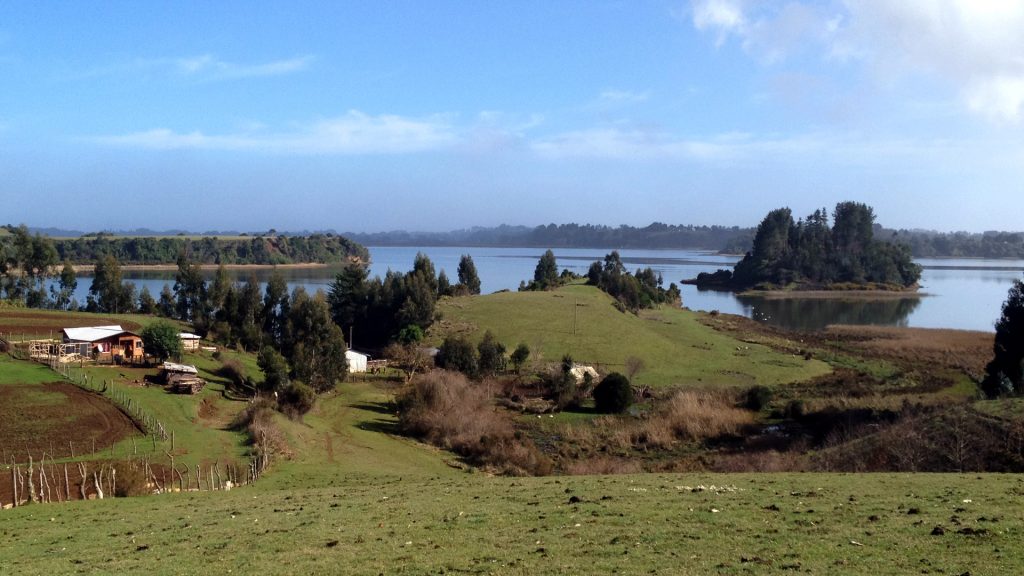
Apparently, the ‘decision makers’ have not yet endorsed global conversations about the crucial role of Indigenous peoples and coastal communities, both for the conservation of biodiversity and for combating and adapting to climate change. Even fewer have known how to prioritise the survival of biocultural heritage.
Meanwhile, pollution caused by erosion and agricultural runoff has increased along with logging, monocultures, and increasingly concentrated torrential rains, interspersed with a prolonged drought. As with many lakes and water resources in Chile, these threats put Budi in danger of ecological death due to eutrophication, while the lake’s ancestral communities are left to fend for themselves to protect their forests and wetlands, their rights and territory, and their biocultural heritage.
How did your organisation convince its board to take on climate work or applying a climate lens framing to work in other areas?
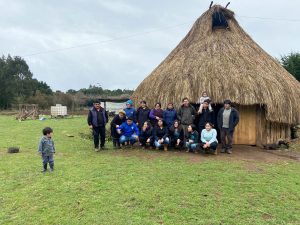 Upon invitation by the Indigenous communities of Lake Budi in 2013, our Chile branch embarked on a journey to co-design mechanisms for sustainable economies and create resilience through the revitalisation of wetlands and forests. Through this almost one-decade journey, our board has learned from our community partners that Indigenous-led co-design is a powerful framework for community-to-community philanthropy towards supporting the most climate vulnerable communities to become resilient while learning together to create regenerative solutions to tackle climate change at a global scale. Currently we are building stronger collaborative networks by incorporating like-minded allies and specialists nationally and globally. These include the Indigenous Peoples Program of the Faculty of Physical Sciences and Mathematics at the University of Chile; the International Consortium of Life Territories (TICCA), and other First Nations worldwide, such as the T’sou-ke First Nation of the Coast Salish Peoples of Vancouver Island, British Columbia, who are pioneering Indigenous regenerative economies.
Upon invitation by the Indigenous communities of Lake Budi in 2013, our Chile branch embarked on a journey to co-design mechanisms for sustainable economies and create resilience through the revitalisation of wetlands and forests. Through this almost one-decade journey, our board has learned from our community partners that Indigenous-led co-design is a powerful framework for community-to-community philanthropy towards supporting the most climate vulnerable communities to become resilient while learning together to create regenerative solutions to tackle climate change at a global scale. Currently we are building stronger collaborative networks by incorporating like-minded allies and specialists nationally and globally. These include the Indigenous Peoples Program of the Faculty of Physical Sciences and Mathematics at the University of Chile; the International Consortium of Life Territories (TICCA), and other First Nations worldwide, such as the T’sou-ke First Nation of the Coast Salish Peoples of Vancouver Island, British Columbia, who are pioneering Indigenous regenerative economies.
Do you think philanthropic foundations should be held to account for their climate commitments, such as with an independent climate action tracker? Why or why not?
As MAPLE Chile Co-Directors and members of the Community Economies Institute, and in our work directly with frontline communities, philanthropic foundations should be held to account for their climate change commitments, especially when these commitments are led by the earth knowledge-holders themselves. From a perspective of an international non-profit channelling direct support to our Indigenous partners in the field, we have learnt that a crucial way to achieve accountability is to build collaborative spaces and anchor institutions in the Global South, where Indigenous peoples and frontline communities can participate in decision-making par to par with philanthropists and scientists.
Do you have any advice to share with other foundations embarking on their own climate journey?
From a perspective of experience in the field working with Indigenous communities, foundations should prioritise the knowledge that communities bring to the table. Safeguarding Indigenous knowledge, including Indigenous lands and territories, are key in the protection and regeneration of our planet’s biodiversity – key to creating resilience and generating new and healthy communities. It is for this reason that both Indigenous-led philanthropic organisations and Indigenous communities themselves should work in direct partnership with Indigenous communities to create a global community-to-community philanthropic network based on action research and co-designed tools based on their territories and homelands.
For more information about the work of MAPLE, visit maplemicrodevelopment.org.







Comments (0)